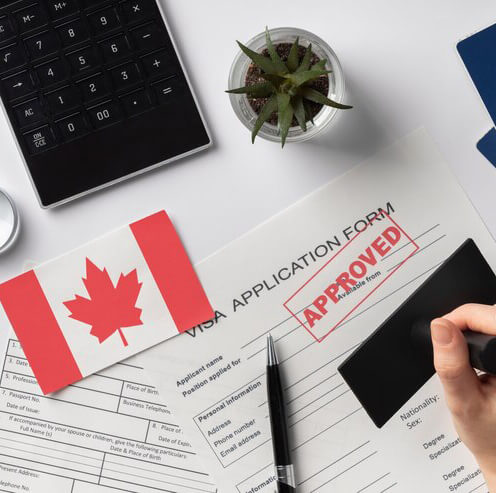Home / Visit

Visit Canada
Every year, Canada welcomes nearly 50 million people from different countries. You can visit Canada as a tourist, to see family and friends, or to do business. Whether you plan on visiting Canada for a few days or several months, you must meet some important immigration requirements.
Most travellers need to apply for visitor visa or an Electronic Travel Authorization (eTA) to fly to, or transit through, a Canadian airport. Canada has a range of visas that allow you to come for a holiday or to visit friends and family, as well as some special visas that allow other activities like short term study or business. Temporary resident visas can be good for one entry to Canada or for a period of time.
There are two types of Canadian visitor visas: single entry visas and multiple entry visas. The main difference between these two visa types is that a single entry visa allows entry to Canada for one-time only and a multiple entry visa allows entry many times.
Which type of visa to get?
 You don’t need to choose. A multiple entry visa is what all visa applicants are automatically considered for. Visa officers will review your application and issue you a visa depending on your situation.
You don’t need to choose. A multiple entry visa is what all visa applicants are automatically considered for. Visa officers will review your application and issue you a visa depending on your situation.
Multiple entry visa
While valid, a multiple entry visa will let you travel to Canada for six months at a time as many times as you want. It will be valid for up to 10 years or one month before your passport expires, whichever is shorter. You must arrive in Canada on or before the expiry date on your visa.
Single entry visa
A single entry visa lets you travel to Canada only one time. For instance, you may only be eligible for a single entry visa if:
- you are eligible for a fee-exemption and the purpose of your entry to Canada is limited (such as, for an official visit by a foreign national)
- you are taking part in a one-time special event in Canada
- there are approved country-specific procedures or guidelines in place.
In most cases, once you have left Canada, you will need a new visa to enter Canada again.
You won’t need a new visitor visa to return to Canada if you are travelling directly to the United States (including its Territories and Possessions) or St. Pierre and Miquelon.
Who Needs a Visitor Visa
Everyone who wants to enter Canada who is not a Canadian citizen or permanent resident, or otherwise visa-exempt, requires a visitor visa. Canadian permanent residents are not permitted to apply for a visitor visa, even if their permanent resident card has expired. They must instead apply for a permanent resident travel document (PRTD). Canadian citizens, including dual citizens, are also not permitted to apply for a visitor visa. They must be travelling on a valid Canadian passport. If you are transiting through or coming to Canada for business, not as a temporary foreign worker, you may need a business visitor visa.
Visa-Exempt Countries
The only people, other than Canadian citizens and permanent residents, who do not require a visitor visa to enter Canada are individuals who are visa-exempt. Canada has agreements with several countries that exempt citizens of those nations from requiring a visa to visit Canada for a period of up to six months. If foreign nationals from visa-exempt countries wish to visit Canada by air, they require a valid electronic travel authorization (eTA).
If they choose to visit by land or by sea, they only require their valid passport issued by a visa-exempt country. The only exception is citizens of the United States. The Canada-U.S. border is the longest undefended land border in the world, and thousands of Canadian and U.S. citizens cross that border every day. U.S. citizens are able to travel to Canada on a valid U.S. passport, and do not require a visitor visa or eTA, provided they are not staying for a period longer than six months. U.S. permanent residents, or Green Card holders, are visa-exempt regardless of their country of citizenship. They require an eTA to fly to or transit through a Canadian airport, and must present a valid Green Card and a valid passport to enter Canada.
